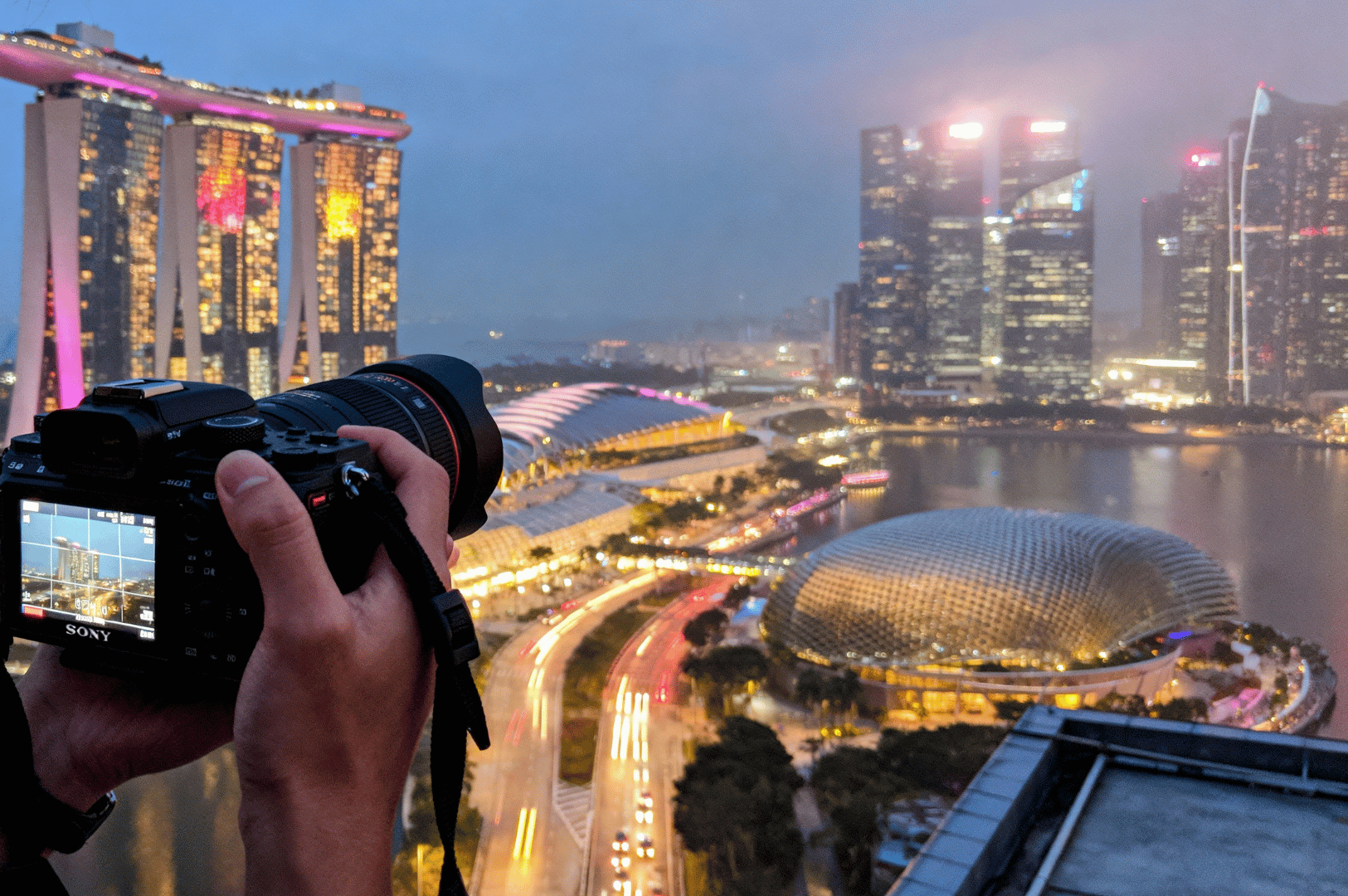For photographers, investing in a new camera system is equal parts excitement and careful consideration. This is especially true in Singapore, where light conditions can be extreme and varied. I recently put the much-anticipated Sony Alpha through its paces in the Lion City, searching for the best combination of camera settings, lens choice, and shooting techniques to produce high-quality images that match the city’s intensity and vibrance. This article shares essential tips, tested advice, and real-world results from several demanding locations and lighting scenarios.
Midday: Dynamic Range in Singapore’s Harsh Sun

The heart of Sony Alpha photography lies in adapting to our vivid, high-contrast days. Full frame cameras offer a clear advantage, especially with advanced features like broad dynamic range and in-body image stabilization. Downtown, harsh sunlight bouncing off glass buildings and deep shadows beneath canopies meant I had to adjust my aperture frequently, often settling around f/8 for sharpness and clarity. ISO was kept low (100-200) to improve image quality and minimize noise—even when reflections and glare threatened to overwhelm my shot.
I tested the system at prominent spots along the Singapore River and near spots covered by CCTV cameras, where security teams are used to seeing photographers. Using a fast shutter speed (1/1000s or higher) let me freeze lively scenes and avoid blurry images, a key factor when capturing movement on bustling pedestrian bridges or busy markets. The Sony’s dynamic range was especially relevant here—I could pull back data from highlights and shadows during editing, maintaining detail in images shot in less-than-ideal conditions.
Low Light Performance: Hawker Centres & Market Scenes

Low light conditions are inevitable for anyone pursuing night photography or interested in Singapore’s legendary hawker centers. By late evening, even the most sophisticated systems will be tested by inconsistent lighting—fluorescent strips in some sections, warm bulbs in others, and reflections off metal surfaces and glass. I set my ISO between 3200 and 6400 and relied heavily on the Sony Alpha’s advanced options for noise reduction. Slow shutter speeds (sometimes down to 1/30s, supported by the system’s stabilization) enabled me to shoot handheld, capturing authentic moments and candid shots that bring the market’s energy to life.
Lens selection can make or break your session. Fast primes or zooms with a wide maximum aperture (f/1.4 to f/2.8) are essential to let in more light. This not only enables clearer night vision, but also produces film-like images with beautiful bokeh and sharp subjects against soft backgrounds. I frequently switched lenses to match each situation, from wide scenes to intimate portraits of vendors at work.
Blue Hour & Night Photography: Singapore’s Urban Glow

Singapore’s cityscape comes alive at blue hour, with its unique blend of natural and artificial lighting. For Sony Alpha Singapore photography, this is the perfect chance to push your camera’s dynamic range and low light prowess even further. Shooting long exposures along Marina Bay allowed me to capture the luminous skyline and the shimmering reflections off the water. I recommend using a tripod for longer shots to maximize clarity and avoid the error of blurry images, especially as night deepens and you stretch your exposure time.
When experimenting with advanced features, such as multiple exposure or HDR, night photography reveals the Sony Alpha’s ability to render subtle gradients and switch seamlessly between high ISO and slower shutter speeds. This was particularly relevant for creative travel photography as I moved between locations like the Singapore River, hawker centers, and popular night markets—each with different ambient conditions requiring quick adjustments.
Practical Camera Tips & Care for Singapore’s Climate
Singapore’s tropical climate poses unique challenges for photographers and their gear. High humidity can fog up lenses and sensitive equipment; always pack a dry bag or silica packs, especially if you’re attending workshops or services on location. I tested the Sony Alpha’s weather-sealing during quick, tropical downpours, and was relieved at the robust protection—an essential for anyone who expects to shoot outdoors often or switch lenses on the go.
Pay attention to local regulations and the presence of security teams, as some places limit the use of tripods or discourage filming. When planning a session at prominent markets or crowded events, lighter setups and discreet camera bags are advantageous for moving through busy crowds or narrow passageways.
For video users, the Sony Alpha’s footage remains clean and sharp in night conditions, with advanced options for 4K output. This is ideal for mixed media professionals or those interested in producing high-quality social media content, enabling smooth transitions between still images and moving footage.
Lessons, Memories, and Recommendations

After thorough testing, my advice for maximizing Sony Alpha Singapore photography is clear: understand your light, invest in versatile lenses, and regularly switch up your camera settings based on the situation—whether you’re battling the midday sun or searching for the rich details of a market at night. Take advantage of the system’s stabilization and dynamic range to ensure sharp, noise-free photos, even in fast-moving or limited-light environments.
Reflections and artificial lighting offer opportunities to create artful images that blend Singapore’s architectural beauty with street life. Be mindful of your ISO to reduce noise, and when possible, shoot in RAW for greater data recovery and editing flexibility. The Sony Alpha system is more than capable of handling the city’s diverse and often challenging photography scenarios, placing essential creative tools into photographers’ hands.
In summary, the Sony Alpha is a highly relevant piece of equipment for professionals and enthusiasts seeking quality, clarity, and artistic flexibility in Singapore. Explore, shoot, and discover new ways to illuminate life—whether you’re sharing your work in-person, online, or through memorable prints.
